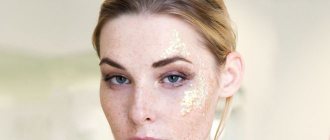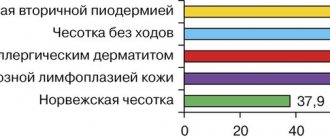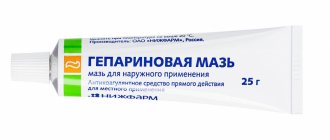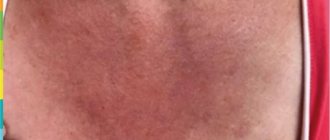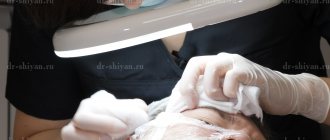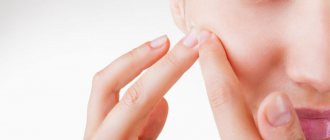Pimples and blackheads are a common aesthetic defect. Most often, teenagers suffer from their presence, but adults also face this problem. To completely cleanse the skin, a comprehensive approach is required. This means that it is necessary to undergo a medical examination to find out the causes of the rashes, switch to a balanced diet and choose caring cosmetics that meet individual needs. To cleanse the skin of the face and body, you should resort to folk remedies. Their effectiveness has been proven over the years.
Pimples and blackheads are a very common aesthetic skin defect.
Causes of acne
Acne on the face and body appears for various reasons.
Most often they arise as a result of the greatest activity of hormones: in adolescence, during a certain phase of the menstrual cycle, during pregnancy, in case of disruption of the endocrine system. They do not bypass even newborns and infants: hormones or a reaction to nutrition can affect this. Pimple is not a medical term. Experts, depending on the condition of the skin and inflammation, distinguish the following types of acne (acne):
- comedones - pimples in which a sebaceous plug has clogged the pore, are white or black;
- papule is an inflamed and painful full-blown pimple; bluishness and redness may appear at the site of inflammation;
- pustule - differs from a papule in the presence of purulent contents;
- nodular cystic acne - a severe form of pustules that penetrate deep into the dermis and are very painful;
- fulminant acne is the most severe form and requires medical intervention.
Severely advanced inflammation can cause bruising and redness. There may also be internal, subcutaneous acne. They are very painful. And in order to cure them, you need to make them ripen faster and break through to the surface of the skin.
How to treat hormonal acne in women
Acne caused by hormonal disorders should be treated by a gynecologist-endocrinologist or endocrinologist. However, patients usually go to see a dermatologist, who often cannot determine the cause of the disease and prescribe the correct treatment.
Treatment of hormonal acne in women can be local, when medications are applied directly to the affected areas of the skin, or systemic, using oral medications.
To relieve inflammation, experts recommend the use of antibiotics. A gynecologist-endocrinologist, after an appropriate examination, especially in pronounced cases of the disease, initiates hormonal treatment using hormonal contraceptive pills. Of course, it is used in women after twenty years, when puberty and restructuring of the body have completely occurred.
Hormonal birth control pills
Drugs are selected individually, taking into account hormonal imbalance, age, and concomitant diseases. The duration of administration is also regulated by the doctor.
To treat severe acne, a powerful drug containing a vitamin A derivative, isotretinoin, is used. Isotretinoin tablets should be taken only as directed and under the supervision of a physician; they are toxic and therefore are not intended for self-medication. Produced under the trade names: Roaccutane, Acnecutane.
During treatment, it is imperative to use contraception (hormonal or mechanical) both before and after the start of therapy, since the drugs have a teratogenic effect on the fetus.
Prevention of acne and pimples
Prevention of acne and pimples includes proper balanced nutrition, diet, and regular skin care. During the period of greatest activity of the sebaceous glands (especially in adolescence and youth), exclude fatty foods rich in simple carbohydrates, sweets, and starchy foods from your diet. Alcohol and cigarette consumption also affect skin condition. Therefore, they should also be abandoned. In addition, do not forget about regular cleansing of your skin. Use antiseptic masks and creams.
Do not squeeze blackheads and pimples. By doing this, you can provoke even more of their appearance and the appearance of scars and scars.
These simple rules will help keep your skin pores clean and prevent dust and bacteria from getting into them, which contribute to the development of inflammation.
Symptoms of acne (acne)
- Increased oiliness of the skin of the face and head (increased sebum production);
- Small or large red rash;
- The appearance of white ulcers;
- Soreness of the skin in the areas of the rash;
- Scars and pigmentation after acne heals.
In the first stage, acne affects only certain areas of the face - most often the forehead, cheeks and chin. In the future, acne spreads to the neck and chest areas. At the third stage, ulcers and acne increase in size, covering increasingly large areas of the skin, and after healing they leave large scars.
Acne treatment
In fact, getting rid of pimples and blackheads (blackheads) is not very difficult. You just need to use drugs and products specially designed for this. These can be pharmaceutical drugs, cosmetics, as well as home recipes to combat this disease.
Pharmacy assistants
For mild cases of acne, it is recommended to use
- antiseptics,
- adsorbents, metabolic stabilizers,
- antibacterial drugs (antibiotics),
- hormonal drugs.
Antiseptics
Antiseptics cleanse the skin, disinfect, and prevent inflammatory processes in the upper layers of the epidermis. These include drugs such as “Metrogil gel”, “Streptotsid”, “Efezel”, ichthyol ointment, “Tsindol”, which are available in the form of ointments, anti-acne masks (diluted powder), suspensions.
Adsorbents
Adsorbents remove waste and toxins from the body (and the gastrointestinal tract), thereby promoting its cleansing. Available in the form of tablets for oral administration and powder. Good adsorbents are brewer's yeast, Polysorb, combined biologically active additives, Laktofiltrum.
Antibacterial drugs
Antibacterial drugs prevent inflammation from becoming infected. To combat acne, ointments and gels “Levomikol”, “Zinerit”, “Dancil T” are recommended.
Hormonal drugs
The hormones contained in hormonal preparations normalize and reduce the activity of the sebaceous glands. The most popular remedy for combating acne is hydrocortisone ointment and its analogues.
Why does pimple inflammation* occur on the face?
One of the links in the pathogenesis of acne is an increase in the colonization of propionibacteria. Their reproduction is promoted by anaerobic conditions (clogged pores). Propionibacterium acnes during its life processes secrete substances that can attract neutrophilic leukocytes involved in inflammation. The body defends itself by producing antibodies in response - antigens of propionibacteria, which support the inflammatory process.10
Due to microbial antigens, neutrophil granulocytes and mononuclear phagocytes, which are part of the physiological protective system of cells, are attracted to the location of the rash. This contributes to the development of aseptic inflammation.10
Clindovit gel is a topical antibiotic. Its main active ingredient is clindamycin. It exhibits antimicrobial activity against propionibacteria.6
But it has long been proven that inflammation during acne formation is primary. Irritation of sebocytes (cells of the sebaceous glands) leads to the production of interleukins, which in turn are stimulators of inflammatory reactions. They provoke follicular hyperkeratosis, cause blockage of the sebaceous glands, resulting in the formation of comedones.40
Next, leukocytes 10 are attracted to the walls of the follicle. The vessels located around the inflamed area dilate, which causes swelling and redness. During the process of inflammation, cell destruction occurs and a cavity forms inside the papule. Over time, it fills with pus (a product of the breakdown of leukocytes and bacteria), transforming into a pustule 29.
Inexpensive but effective
However, you should not immediately resort to the strongest drugs. You can get by with easier means.
Clay
For example, cosmetic clay is excellent for ridding the skin of acne; it cleanses pores well and nourishes the skin.
Clay is an excellent natural adsorbent.
Blue and white clay are best suited for this purpose. It is enough to apply clay masks to your skin 2-3 times a week, and within a month you will see the results from their use.
Badyagi powder is an effective remedy in the fight against acne. Dilute it with water to a paste and apply it to your face for 15 minutes. Repeat once a week.
Hydrogen peroxide
Hydrogen peroxide is a great helper for cleansing the skin and treating acne. It disinfects the skin, draws dirt out of the pores, and prevents the development of bacteria in them that cause inflammation. Peroxide is effective for purulent acne. Before use, dilute a 3% hydrogen peroxide solution with boiled water in a 1:1 ratio. Wipe the skin with a cotton swab soaked in diluted peroxide. Or use it spot on.
Acetylsalicylic acid
Acetylsalicylic acid (aspirin) occupies an important place in cosmetology. Recently, aspirin skin peeling has become popular. Crush several aspirin tablets, dilute them with water to a paste, then apply the resulting mixture to your face. Rub your face lightly to remove dead skin cells. Such a cheap and simple remedy will help even out the skin and stop the inflammatory process.
Activated carbon
Activated carbon has proven itself to be an excellent adsorbent for skin. Masks made from it give visible results immediately after the first use. To prepare this miracle mask, dilute 1 tbsp in water. spoon of gelatin, then heat it. Add several tablets of crushed activated carbon to warm gelatin. Stir everything thoroughly. Then apply the warm paste to your face and leave until the mask dries completely. Similarly, you can use a mask made from gelatin alone.
After the gelatin mask dries, remove it along with any dirt.
Is it effective to cleanse your face if you have acne*?
Vacuum, ultrasonic, atraumatic, mechanical facial cleansing for acne is quite widely used in domestic and foreign clinical practice. Despite the lack of full-fledged research on the effectiveness of these techniques in the treatment of acne*, doctors' observations show that in some cases they can have a positive effect. [152]
But it is important to correctly optimize the use of any of the available technologies. To achieve a sustainable result, the procedure must be carried out in compliance with sterility and safety measures, as well as at a certain frequency, which depends on the characteristics of the patient’s skin. [152]
Homemade beauty recipes
Honey is famous for its healing and antiseptic properties. It perfectly tones the skin, makes it soft, velvety, and perfectly tightens pores. Honey can be used in its pure form, diluted with water and used as a tonic, or used to create cleansing and nourishing masks. After using the honey product, wash your skin and apply a nourishing cream.
Wipe oily skin and directly affected areas daily with a cotton pad soaked in lemon juice or strongly brewed green tea.
Walnut (its leaves) also helps reduce inflammation on the skin and thereby prevent further spread of comedones. To prepare the decoction, pour 2 tablespoons of walnut leaves (dry) into a glass of boiling water and boil for 5 minutes. Then cover the broth with a lid and leave to brew for another 25-30 minutes. After this, strain the broth and use it, rubbing it on problem skin several times a day.
Traditional medicine also helps in the treatment of marks and scars left after large acne. Melissa essential oil and blue volcanic clay cope well with this problem. Mix a few drops of oil with clay and dilute with water to form thick sour cream. Apply the paste on your face for half an hour, then rinse with warm water. The therapeutic effect of this mask is achieved due to the ability of lemon balm to relax the skin, heal wounds and tighten scars. Repeat the mask 1-2 times a week.
If your pores are large, a mixture of chamomile flowers and sage leaves will help tighten them. Take 1 teaspoon each of chamomile and sage, pour boiling water over them and let it brew for 20-30 minutes. Apply lotions to problem areas with this infusion.
